Genre: Puzzle Developer: Taito Publisher: Taito Players: 1 Released: 1991
The first time I ever saw anything Qix related was around 1985, back at the old Circus Playhouse arcade in Hollywood, Florida. It seemed difficult to understand at first, what with all those lines being drawn on the screen. It kind of reminded me of the light cycle sequence from Disney’s Tron. As I watched another person play, I began to see what the object of the game really was (those simple instructions on the bezel never really help at all). It became clear enough to warrant venturing a quarter, so I gave it a shot. Around thirty seconds and a somber “GAME OVER” screen later, I realized I didn’t understand it enough. Needless to say, I stayed far away from anything that bore the name Qix for many, many years.
Even when the arcade sequel, Ultimate Qix, was ported to the Genesis, I kept my distance. For some reason, the concept seemed beyond my grasp, too hard for me to ever really dominate. I was an ace at all the side-scrollers and shooters of the era, but those didn’t really demand thought as much as they did quick reflexes and instinct. No, Qix was different. Despite its new sci-fi trappings, it required you to think, plan ahead. I guess I wasn’t the only one who felt this way, as the lone copy available for rent at my local video store languished on the shelf, ignored completely by everyone.
Fast forward almost twenty years, and there I am, staring at my copy on the shelf. Why the hell had I bought it? Did I ever think I’d actually play it? To tell you the truth, I got my copy of Ultimate Qix off eBay about two years ago, and much like the one from the video store so many years ago, it too had been collecting dust. “No more!” I said, as I grabbed the box and removed the cart from its pristine casing. This was the day I would finally get to know Ultimate Qix. This was the day I would finally take it on.
And you know what? I beat the damn thing inside of forty minutes. It turns out that the game I once considered to hard to play was a paper lion that only had sixteen stages and didn’t require too much thought at all. As I sat and stared at the all-too-brief ending sequence, I realized that I was either smarter than I’d given myself credit for, or I was just a big doufuss and the game wasn’t all that hard to begin with. I finally ended up going with “doufuss.”
Ultimate Qix makes no attempt to hide its arcade roots. Quite the contrary, actually, and the game embraces them willingly. There is nothing but action here, and Taito has managed a brilliant mix of action and puzzle strategy to create a title that’s only major flaw is its short duration. Be it the colorful graphics or multiple modes of play, this is one game that players will find themselves coming back to, always determined to best their high score.
Known as Volfied outside the U.S. Ultimate Qix is a puzzle/action game that tells the tale of a star system conquered by aliens. Aboard the Montross, the heroes receive an S.O.S from survivors deep beneath the planet’s surface. To reach them, the player must battle through sixteen stages, eliminating enemies and cutting through each level to the one beneath. It sounds simple enough, but the enemies and bosses roaming around the field are hell-bent on keeping the Montross from reaching its destination. The ship creates orange lines as it roams the field, and these cut away sections, freeing up the next level and eliminating any enemies in that particular area. Depending on the difficulty level, the amount of field that needs to be cleared changes, and the real challenge is trying to finish each stage with as high an amount of field cleared as possible.
Knowing that most arcade games are meant to be played in quick bursts to maximize profits, Taito added some depth to the Genesis version of Ultimate Qix. There are three modes in all (A, B, C), and they mostly alter the difficulty level by changing the amount of power ups that appear or how much freedom to move is available. The safety of the green lines also changes, and B and C modes let loose blue sparks that force the player to move off them. It’s not like one can afford to stay in a single place for too long anyway, but not being able to retreat to the green lines when being overtaken by a boss can be troublesome!
As I mentioned, there are enemies populating each field, and in the higher modes, they’ll toast the Montross if they touch the lines before it can completely clear the section. Unable to go back over the lines already done, the player is thus forced to think a bit about how best to cut the field, and just going nuts making lines is going to end the game really quick. Taito tossed in some power ups to make things easier, like a timer freeze and an invaluable special attack that works wonders on the bosses, but they’re only good for the round they’re found in, and once the player moves on, the ship is back to being defenseless.
I only have two gripes about Ultimate Qix: the fact that it’s too short and the lack of a two-player mode. I really would have liked the chance to compete against a friend, and it would have made the high score table much more meaningful. Even so, the game is very enjoyable and a great buy for the low price it commands. Taito has a winning formula here, and anyone looking for something decidedly different for their Genesis should give Ultimate Qix a chance.
SCORE: 8 out of 10

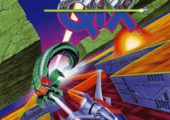
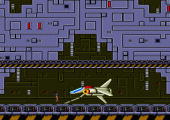
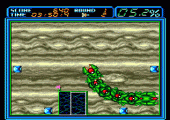
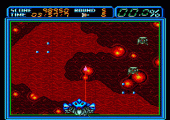
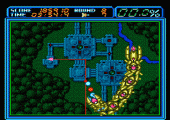
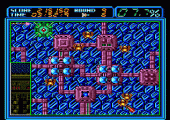
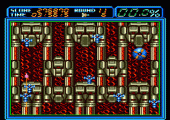
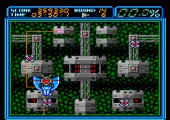
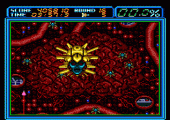
The real challenge, especially mode C, is to try to trap the Qix in one draw, without having done any other draws. That plus the shorter amount of time to do that is for highest score. This assumes playing for score.